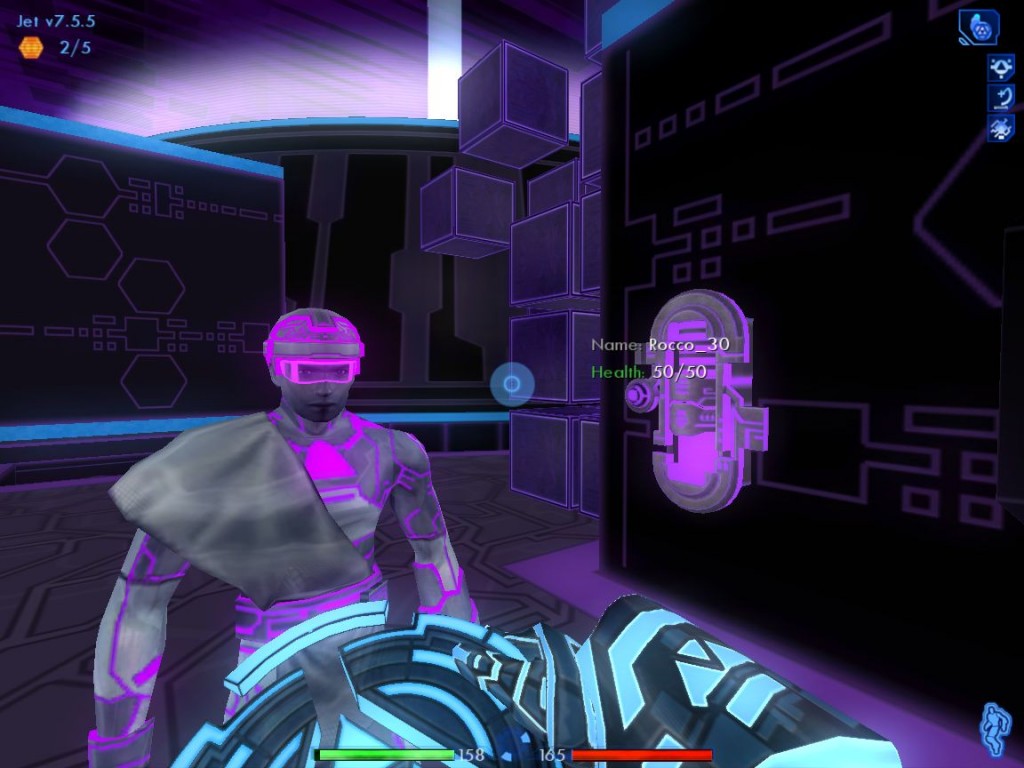I’ve just finished Tron 2.0 and I feel one particular aspect is worthy of a specific mention. That is the ending, or more specifically the final level and concluding cut-scene.
I can appreciate the logic of ending the story in such a way as to invite a sequel, I might not personally enjoy such conclusions but I understand the motivation behind them. However even taking this into consideration a number of the sub-plots that are developed through the game are left unresolved, or with extremely abrupt conclusions.
This feeling of a rushed finale extends to the final level itself, a three stage boss battle in a visually and spatially uninteresting location. During the course of the game the objectives and levels themselves had generally consisted of interesting twists on the core metaphor of being inside a computer system. An early level requires you to reach an “Exit Port” before a reformat is complete, signified by an ever advancing red barrier that “derezes” everything in it’s path. Later you have to configure a Firewall in order to gain access to a secure network, or crash a PDA by opening more applications that it can handle. However by the end of the game the imagination shown previously is gone and you are required to fight a character who’s first appearance is mere seconds before the confrontation itself.
Of course the entire game is not a continuous stream of specifically memorable levels or concepts, but as the climax of the game, and those that anybody who has invested the time to finish the game will remember clearest, the final levels of Tron 2.0 leave a bad taste in the mouth. Not everybody will complete the game, and the percentage of players who do is probably quite low, but those who do are the core fan base. They are the first ones who will promote interest in any subsequent sequels through word of mouth; but such support is unlikely if they feel they have not been provided with a satisfying conclusion.
Given the time and monetary requirements of modern games it’s likely that not all areas can receive the same level of design attention or polish. However there is no practical reason why the last levels of a game should be the ones to suffer. Arguably the start of the game should get the highest level of attention as that will be the area that forms the vital first impressions, but if one element of a game has to receive less attention than the rest it should be the second and fourth fifths of the game. An engaging mechanic combined with a strong motivation to continue will likely carry you over a weaker second fifth provided the middle is strong enough to build the anticipation back up again and carry them through to the conclusion.
It’s easier to forget the weaker parts of a game if they are followed by stronger sections, go out on a high note; there are no encores.
